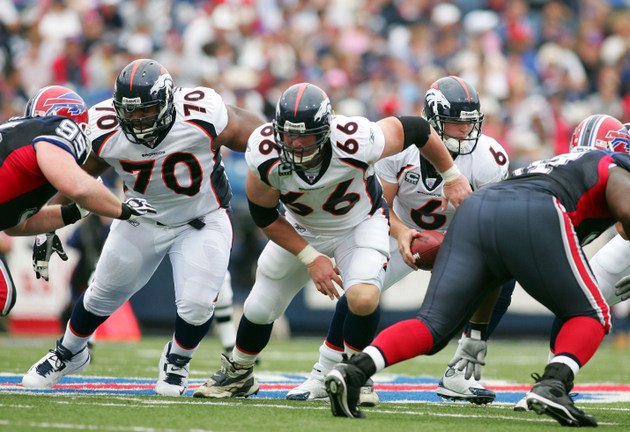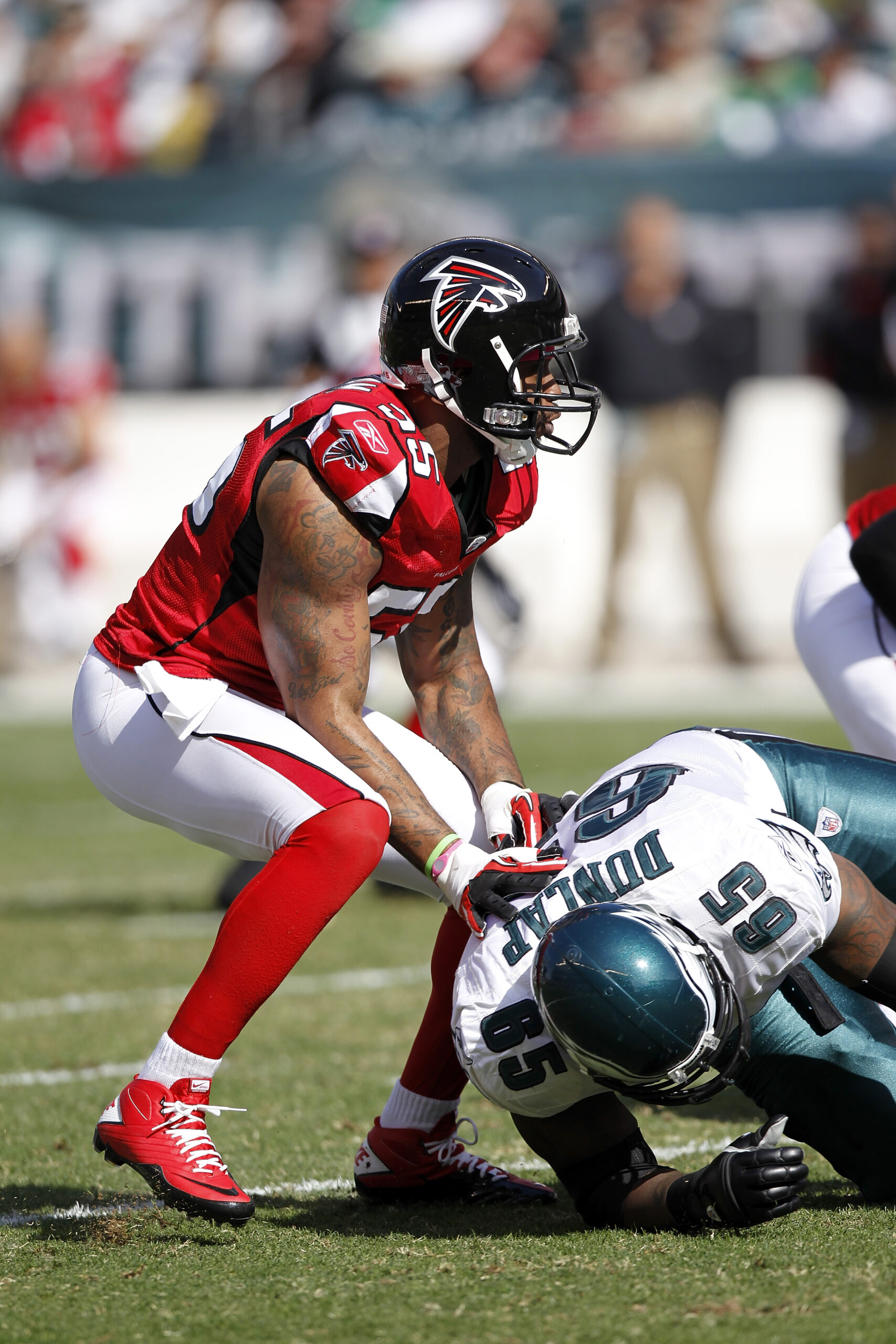Steve Warren from Waldoboro, Maine asks:
I’d like to learn about the distinctions between man/power and zone-blocking schemes, with a focus on how they affect running backs in their quest to identify running lanes and how they impact linebackers in their efforts to fill their run assignments.
While this topic is extensive and could potentially merit an in-depth exploration with diagrams in a future feature on our website, let’s aim for a concise overview of the zone-blocking scheme, highlighting the key terminology and concepts closely associated with this approach.
Zone blocking is as straightforward as it sounds: offensive linemen focus on blocking specific areas rather than preassigned defenders. The outcome of these matchups largely hinges on how the defense responds after the ball is snapped. Just as the assignments for blockers aren’t set in stone in zone blocking schemes, the entry point for the running back into the line of scrimmage isn’t predetermined either.

In zone blocking schemes, offensive linemen emphasize using angles over overpowering their opponents. This is a primary reason why teams that employ zone blocking often prefer smaller, more agile offensive linemen. The Denver Broncos have a historical association with the zone-blocking approach. When facing the Broncos, you’d notice that their offensive linemen resemble five sizable tight ends rather than the massive linemen typical of more conventional NFL systems. This contrast might seem unusual if you’re accustomed to seeing heavier players, but it can be highly effective.
The offensive linemen aim to reach the designated “spot” before the defender, with the idea that the blocker can effectively prevent the defender from impacting the play by establishing control over that specific area.
Zone-blocking schemes are particularly vulnerable to defensive penetration as it closes off potential running lanes for the back. While penetrating the line of scrimmage is crucial against this scheme, it’s advantageous for the offense when the defense is forced to move sideways because lateral movement limits the defense’s power on contact. This is precisely why the “stretch” play is a fundamental component of zone schemes; it’s designed to compel the defense to shift laterally, thereby creating vertical openings in the defensive front.
For linebackers facing zone schemes, swift play recognition is of utmost importance. This is because offensive linemen are rapidly maneuvering to specific spots, requiring linebackers to outpace them to those locations. Linebackers are instructed to swiftly move “downhill.” Just as a defender can be at a disadvantage if caught moving laterally, a well-timed read and reaction by a linebacker can catch an offensive lineman in a sideways movement, making it challenging for the lineman to execute his block. Linebackers are coached to engage with the lineman before they can turn their shoulders upfield, as that’s when the size difference can become problematic.
On the play side, you’ll observe the offensive linemen employing dynamic zone footwork, while on the backside, you’ll witness a flurry of cut-blocks in zone schemes. In essence, the objective is to free up running lanes on the play side and obstruct pursuit from the backside so that the running back can select the front-side opening. For defenders, facing a zone team in the schedule entails encountering a continuous series of cut blocks. Yippie.

A lineman moving sideways can be stopped effectively since their balance isn’t as strong, but if they manage to outpace the linebacker and shift towards a north-south direction, physics typically favors the larger lineman.
A distinctive feature of teams that lean towards zone-blocking schemes is their emphasis on play symmetry. This means they use formations where, before the snap, there’s no clear indication of which side the play will run. This ambiguity is designed to disrupt the defensive charge and make it more challenging for defenders to penetrate. One of the primary reasons why zone blocking teams favor two-tight end personnel groupings is because there’s the immediate possibility of symmetry by putting one tight end to each side of the center – potentially two mirrored three-man blocking surfaces (tight end/tackle/guard) to each side.
The plays within the scheme are inherently straightforward, often falling into the categories of inside or outside zone. However, they can manifest in a multitude of variations depending on the defensive alignment and reactions.
Combination blocking, a common element in zone schemes, involves two blockers collaborating to engage one defender at the line of scrimmage. Once they establish control over the inline defender, one of them proceeds to ascend to the linebacker level. The specific dynamics of these combination blocks are heavily influenced by the initial alignment of the defensive lineman, whether they are in the gap, head up, shaded, or other positions. If a linebacker at the second level makes a poor read or moves laterally without posing a threat to the line of scrimmage, it can enable an offensive lineman to sustain their presence on a double team for a longer duration.
This is precisely why zone teams place a premium on agile offensive linemen. While these linemen might be lighter in weight, they often require double teams to prevent being pushed back at the line of scrimmage by larger defensive tackles. Once they’ve managed to control the penetration, their agility and nimbleness become essential as they must effectively block smaller defenders, typically linebackers, in open space.
Zone schemes can gain popularity because they don’t demand a roster of dominant, overpowering offensive linemen (a relatively rare commodity) as much as you do quick and smart tough-guys. The backs don’t necessarily have to be the most physically gifted; rather, they must possess exceptional vision and patience, qualities that aren’t automatically present in a back just because they’re fast, powerful, or elusive. All three of those attributes can be negated if the back doesn’t dissect the puzzle well in this particular scheme.
Because zone schemes are so dependent upon technique and the understanding of concepts (rather than the memorization of plays), it’s the kind of scheme that needs great coaches that have a deep understanding of the techniques and how to teach in-game improvisation based on the unknowns a defense will give an offense.
Zone blocking unquestionably holds a significant spot in NFL history, and its timeless and adaptable nature ensures that it continues to garner support in today’s game, with teams like Denver, Seattle, Houston, and Philadelphia remaining proponents of this concept.

